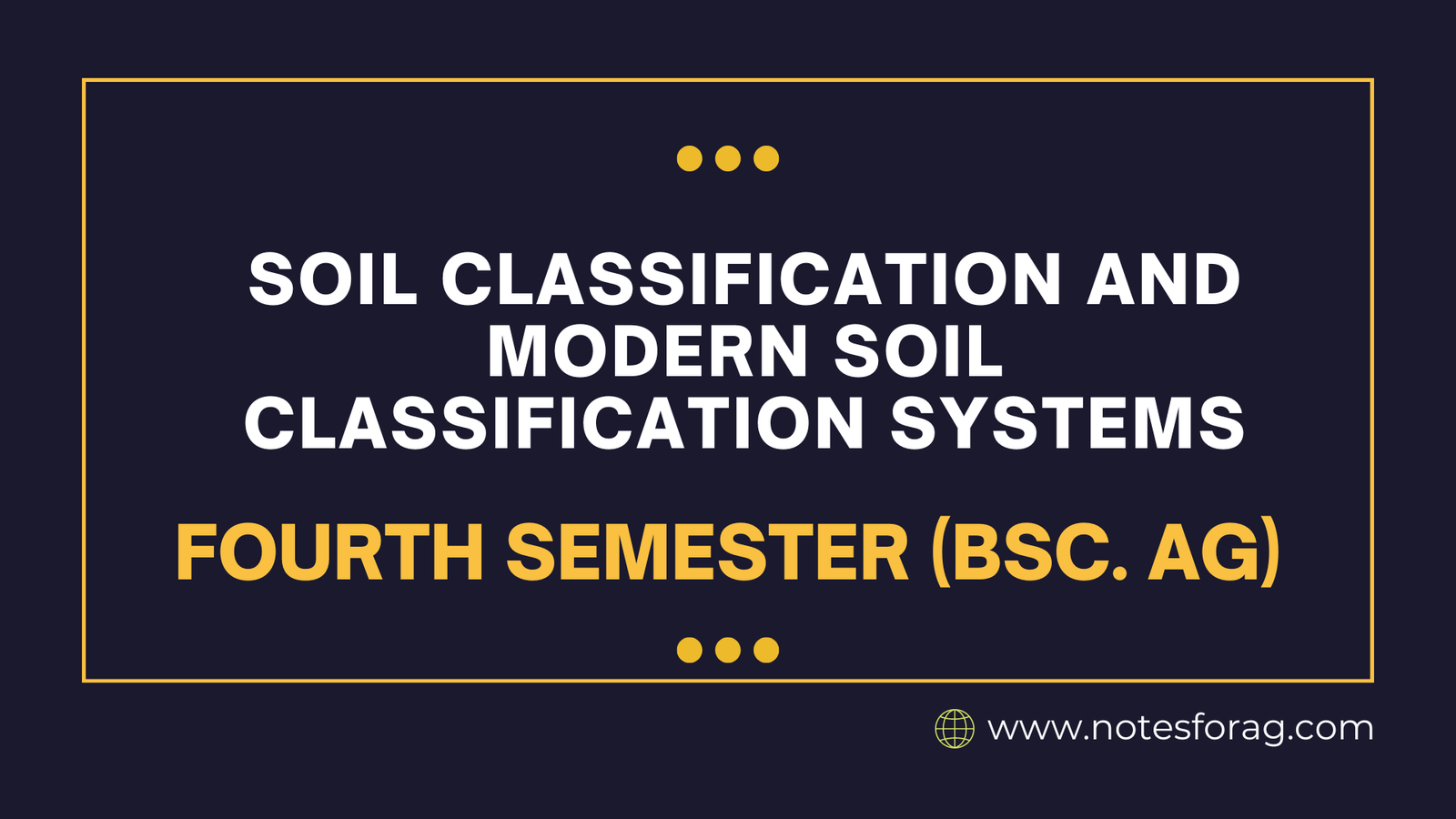Soil classification, the process of grouping soils based on shared characteristics, has evolved over centuries from rudimentary observations to complex scientific systems. This voyage is a reflection of how much we as a species have learned about the complex interactions of soil, vegetation, climate, and human activity.
Table of Contents
Early Observations and the Beginnings of Classification
- Ancient Civilizations: Early societies created basic classifications of soil based on texture (clay, loam, sand) and colour after realising the importance of soil for agriculture. Texts from the ancient Greeks, Romans, and Egyptians provide proof of this crude classification.
- Early Modern Era: Theophrastus (372-287 BCE) and Albrecht von Haller (1708–1777), two of the first naturalists, made notes on the different types of soil and its characteristics. These classifications, however, lacked a systematic method and were mostly descriptive.

Towards Scientific Systems
- 19th Century: Systematic soil classification emerged with the beginning of scientific enquiry. A pioneer in agricultural chemistry, Justus von Liebig highlighted the significance of soil composition for plant growth in 1840. This led to the creation of analytical techniques for researching soil characteristics.
- Late 19th and Early 20th Centuries: Vasili Dokuchaev (1846–1903), a Russian scientist, is regarded as the founder of contemporary soil science. Realising that soils were the result of interactions between climate, vegetation, parent material, and time, he established a classification system based on soil formation processes.
History of Soil Classification
The history of soil classification is a fascinating journey that reflects our evolving understanding of this vital resource. Here’s a glimpse into its development:
Early Beginnings:
- Ancient Civilizations (3000 BC onwards): The very first attempts at soil classification likely go back to the dawn of agriculture. Farmers probably relied on straightforward criteria related to ease of recognition and agricultural potential, like:
- Topsoil color
- Consistency and permeability (drainage)
- Risk of waterlogging
- Stoniness
Scientific Approaches Emerge:
- Greek Scholars (4th century BC onwards): Theophrastus and other Greek philosophers made important contributions. They created classes according on the texture, colour, and moisture level of the soil, among other attributes. Future scientific methods benefited from the foundation that these early systems created.
National and Regional Systems:
- 18th and 19th Centuries: As knowledge about the composition and characteristics of soil increased, various nations and areas created their own classification schemes. Local farming practices and soil characteristics were frequently reflected in these systems.
The Rise of International Collaboration:
- 20th Century: The 20th century saw a push for international collaboration in soil classification. Efforts like the International Soil Science Society (ISSS) aimed to create a more unified approach.
- FAO/UNESCO Soil Map of the World (1974): The development of the FAO/UNESCO Soil Map of the World was a noteworthy achievement. An first step towards a worldwide system of uniform soil units was indicated by the insertion of a legend on this map.
Modern Soil Taxonomy (USA):
- Mid-20th Century (USA): In the United States, a comprehensive soil classification system called Soil Taxonomy was developed by the USDA Soil Survey Division. This system focuses on soil properties formed by climate, organisms, parent material, topography, and time.
International Reference Base for Soil Resources (IRB):
- 1990s: The FAO launched the International Reference Base for Soil Resources (IRB) to establish a framework for a globally applicable soil classification system.
Continuous Development:
Soil classification remains a dynamic field. New discoveries about soil formation, the influence of human activities (Anthrosols), and the need for global consistency continue to drive the refinement of classification systems.

Modern Soil Classification Systems
- The USDA Soil Taxonomy (1975): The US Department of Agriculture (USDA) created this comprehensive system, which classifies soils using approximately 20,000 series, 12 orders, 6 suborders, 20 major categories, and 138 subgroups. This hierarchical approach considers many factors, including mineralogy, texture, chemical properties, and soil horizons.
- The World Reference Base for Soil Resources (WRB, 2006): Under the direction of the International Union of Soil Sciences (IUSS), the WRB is a global initiative that focuses on the roles that soil plays in relation to land use. It classifies soils into 32 reference groups based on key diagnostic features and strata.
Contemporary Challenges and Future Directions
- Climate Change: Dynamic categorisation systems that take these changes into account are necessary since shifting climatic patterns have an impact on soil production and deterioration.
- Land Use Change: Urbanization, deforestation, and agricultural intensification affect soil properties and require updated classification approaches to reflect these modifications.
- Global Collaboration: For efficient soil management and sustainable development, international cooperation is essential to ensuring data comparability and harmonising soil classification systems.
Conclusion
The process of classifying soil is a reflection of our expanding knowledge of the intricate nature of soil and its significance to human societies and ecosystems. Current systems, such as the WRB and the USDA Soil Taxonomy, give thorough frameworks for identifying soil types and provide insightful information about the traits, possibilities, and weaknesses of each type. To improve these systems, adjust to shifting environmental conditions, and advance sustainable soil management for coming generations, ongoing research and international cooperation are crucial.
Frequently Asked Questions (FAQs)
What is the introduction of soil classification?
A systematic technique for understanding and describing the characteristics and formation of various types of soil is soil classification.
What is the modern system of classification of soil?
These levels, in order from most general to most specific are: Order, Suborder, Great Group, Subgroup, family, and Series.
Who is the father of soil classification?
Vasily Vasilevich Dokuchaev is commonly regarded as the father of soil science, the study of soils in their natural setting.
Related Article

